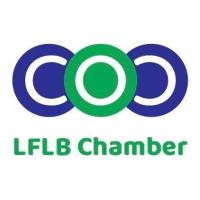Experiencing a surge in growth as a small business owner can feel like catching a wave of exhilaration and chaos all at once. Not only does it open a floodgate of opportunities, but it also brings a myriad of challenges that can test the very fabric of your business. From maintaining your unique company culture to managing increased financial demands, navigating this new terrain requires strategic foresight and adaptability. This article is your guide to transforming these challenges into pillars of strength that will sustain your success for the long haul.
Keeping Your Company Culture Intact
When your small business experiences rapid growth, preserving your unique company culture becomes essential for maintaining employee morale and productivity. Start by implementing careful hiring practices to ensure new team members align with your core values. Additionally, regularly reiterate your mission to keep everyone focused on the company’s goals, and make training and development accessible to all employees. Encourage open communication channels, which is crucial for addressing concerns and fostering a collaborative environment. Finally, recognize and celebrate employee achievements to reinforce a sense of belonging and commitment.
Building a Business Emergency Fund
Creating an emergency fund for your business is essential to navigate unexpected costs and revenue dips that come with rapid growth. An emergency fund can act as a financial safety net, ensuring that you can still pay your bills and maintain operations during turbulent times. Automating contributions directly from your business revenue into a separate high-yield savings account can enhance your efforts and prevent the temptation to use the funds for other purposes.
Reassessing Your Business Structure
When experiencing rapid business growth, it’s crucial to reconsider your business structure. Forming a limited liability company (LLC) offers substantial benefits, such as shielding your personal assets from business liabilities, enjoying tax advantages, and benefiting from less paperwork and operational flexibility. You can save on high legal fees by handling the filing process yourself or through an affordable formation service like ZenBusiness.
Embracing Flexibility for a Growing Team
Introducing flexible work arrangements, such as remote work or adjustable hours, can be a strategic way to manage the complexities of a rapidly expanding workforce. These arrangements provide employees with greater autonomy and enhance their work-life balance, which in turn can boost morale and productivity. Moreover, providing options like compressed work weeks or part-time hours helps accommodate diverse employee needs and schedules.
Leveraging AI: Streamlining Operations for Smarter Growth
Utilizing AI and machine learning can be incredibly effective for small business owners aiming to handle rapid expansion. These technologies can automate mundane tasks like data entry and payroll processing, which can cut costs. Furthermore, AI tools can enhance decision-making by analyzing extensive data sets, thereby reducing errors and improving productivity. With the support of AI, you can focus more on strategic initiatives rather than getting bogged down by routine tasks.
Captivating Your Audience with Engaging Content
To effectively maintain your customers’ interest and add significant value, concentrate on crafting engaging and informative content. This strategy hinges on understanding your audience deeply through detailed buyer personas, which help tailor your content to resonate with their needs and preferences. By emphasizing high-quality, value-driven material, you ensure your content stands out in an era where quality surpasses quantity. Additionally, incorporating interactive elements like polls, quizzes, and user-generated content campaigns can greatly enhance engagement and build a loyal community.
Investing in Staff Training to Manage Supply Chains
Investing in staff training is crucial for equipping your employees with the necessary skills to manage increasingly intricate supply chains. As your business expands rapidly, comprehensive training ensures that your staff can handle complex processes, leading to efficient and proficient supply chain management. Training programs not only cover essential skills but also address potential issues such as variability and integration, thereby preventing disruptions. Additionally, innovative training solutions like on-the-job training can help employees stay current with technological advancements and best practices.
In the whirlwind of rapid growth, small business owners have a unique opportunity to redefine their legacy. By approaching each challenge not as a stumbling block but as a stepping stone, you can build a foundation that not only supports your expanding venture but also propels it into a future of sustained success. Embrace the chaos, harness the opportunities, and watch as your small business transforms into an enduring powerhouse in the industry.
Discover the benefits of joining the Lake Forest/Lake Bluff Chamber of Commerce and take your business to new heights with our vibrant community resources!
